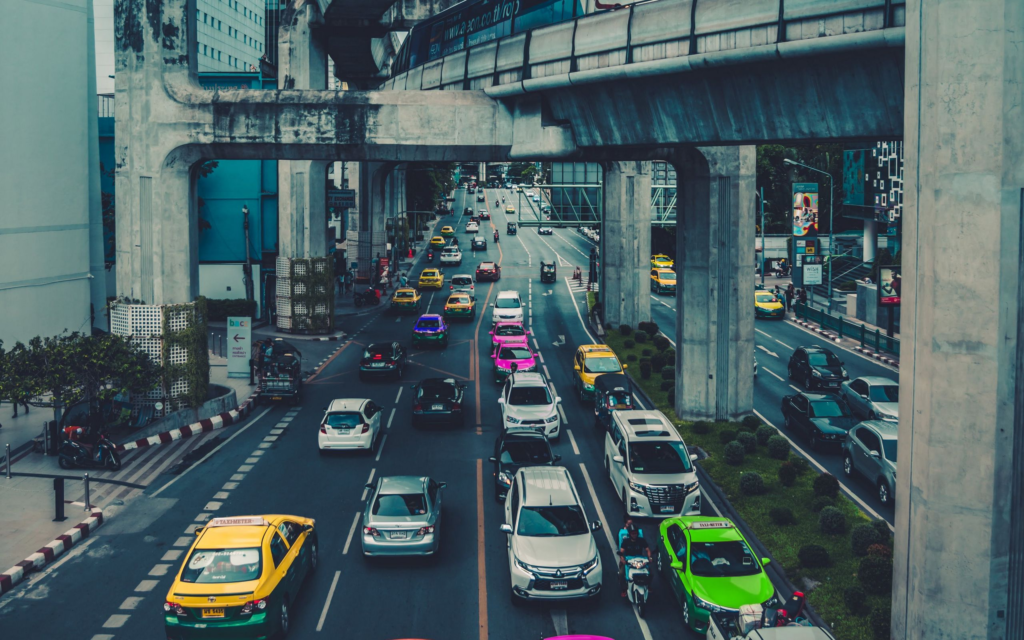Welcome to New York City, a place renowned for its towering skyscrapers, rich cultural tapestry, and a bustling pace of life. If you’re stepping behind the wheel in this city, it’s crucial to be prepared and informed about the local traffic laws. This guide aims to provide you with a comprehensive understanding of NYC’s traffic rules, helping you navigate the city’s vibrant streets safely and confidently.

I. The Basics: General Traffic Regulations
Navigating New York City’s dynamic streetscape starts with grasping the essential traffic rules. Here’s a compilation of fundamental regulations:
1. Yielding the Right of Way
In NYC, drivers must yield to pedestrians and other motorists to avoid mishaps. This principle applies to both marked and unmarked crosswalks.
2. School Bus Rules
Stopping for school buses displaying flashing lights or while they are loading and unloading is a mandatory rule, even on a divided highway.
3. Handling Intersections
Avoid halting at intersections if traffic congestion prevents you from clearing the area during a green light.
4. Seatbelt Use
Seat belts aren’t optional; they’re a must for all front-seat drivers and passengers.
5. Child Safety
Children under 4 years old should be in a safety seat, while those between 40 and 100 pounds up to 6 years old must use a booster seat. For children over 100 pounds, seat belts with shoulder and lap belts are required.
6. Following Distance
Preserve a 2-second gap when driving behind another vehicle, and increase this in adverse weather conditions.

II. Pedal to the Metal: Understanding NYC’s Speed Limits
While the energy of New York City may be fast-paced, the speed limits aren’t. Here’s a breakdown of speed restrictions:
| Location | Speed Limit (mph) | Speed Limit (km/h) |
|---|---|---|
| Within city | 30-45 | 48-72 |
| Highways | 55 | 89 |
| Interstate roads | 55-65 | 89-105 |
Remember, New York also enforces a “reasonable and prudent” speed law, urging drivers to modulate their speed based on road and weather conditions.
III. Making Moves: Rules for Passing, Turning, and Parking
Handling the crowded streets of New York City requires careful execution of passing, turning, and parking. Here are some guidelines:
1. Lane Navigation
On multi-lane roads, slower drivers often overtaken should shift to the right lane, allowing safe passing on the left.
2. Signaling Turns
Always signal at least 100 feet before a turn, using hand signals if turn lights aren’t functional.
3. Understanding Parking Signs
Avoid costly fines by distinguishing between “No Parking,” “No Standing,” and “No Stopping.”
| Sign | Interpretation |
|---|---|
| No Parking | You may stop temporarily to load/unload people or goods |
| No Standing | Brief stop allowed only for loading/unloading people |
| No Stopping | Only stop if directed by a police officer, traffic signal, or sign |
Remember, parking in front of driveways, near fire hydrants, railroad crossings, traffic signals, crosswalks, or fire stations is strictly prohibited.
IV. Pro Tips for NYC Driving
To ensure a secure and pleasant driving experience in New York City, follow these professional driving tips:
- Keep your eyes moving, stay alert for vehicles entering the highway, parked cars, pedestrians, and cyclists.
- Frequently check your inside and outside rearview mirrors.
- Do not anticipate the right of way; ensure it’s safe before proceeding.
- Maintain at least a three-second following distance.
- Choose familiar routes for your trips, and avoid driving during limited visibility hours like dusk or dawn.
- Don’t drive for extended periods without taking breaks.
- Always keep your windshields and rear windows clean, inside and out.
- Focus on your driving and be ready for unforeseen events.
- Avoid driving when emotionally upset.
- Never drive under the influence of alcohol, drugs, or any medication affecting your ability to drive safely.
Remember, the key to mastering New York City’s vibrant streets lies in a thorough understanding of its traffic laws, proactive attentiveness to your surroundings, and a safety-first approach. Equip yourself with these rules and tips, and you’re ready to tackle the city that never sleeps. Safe travels!




